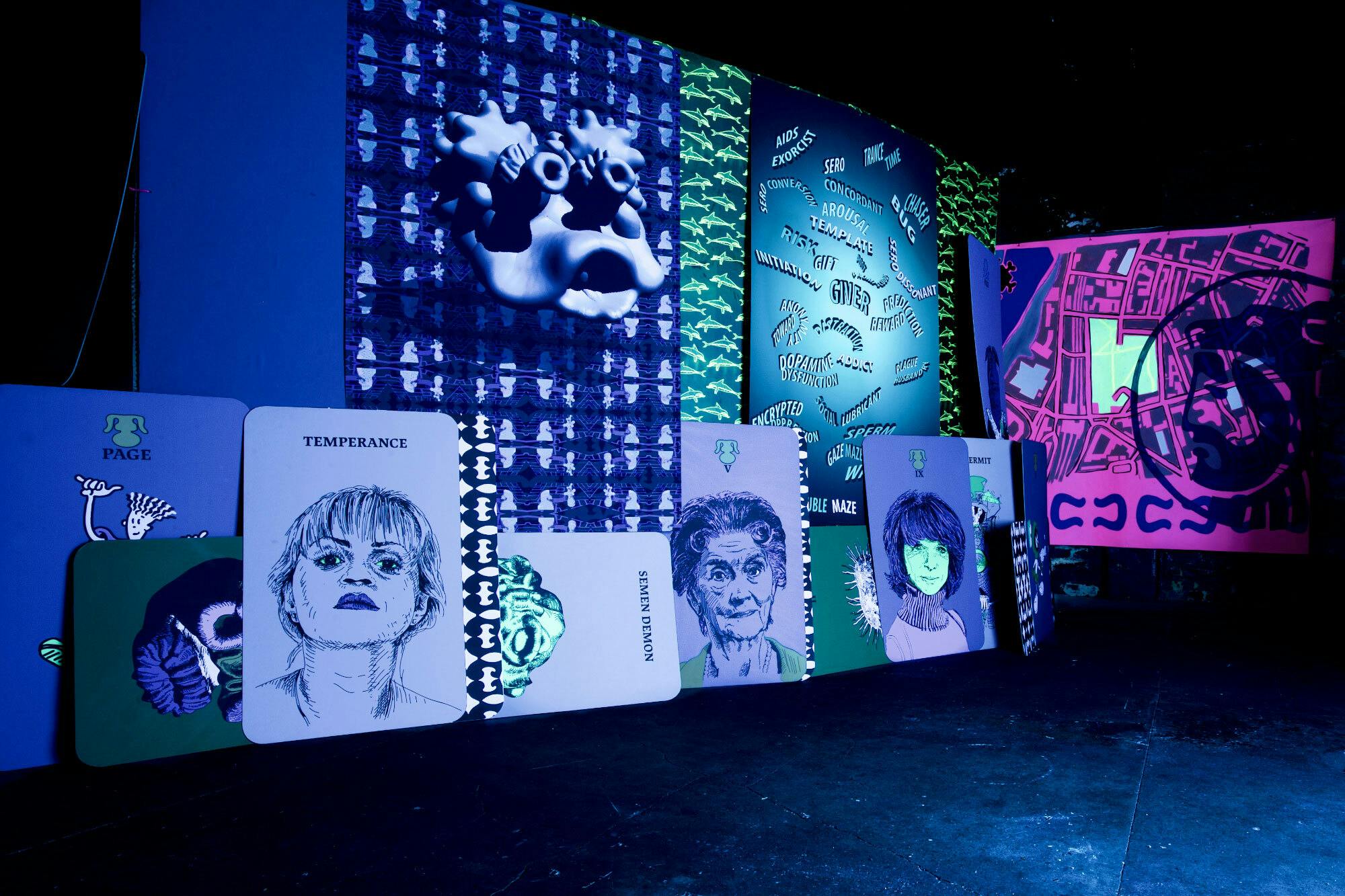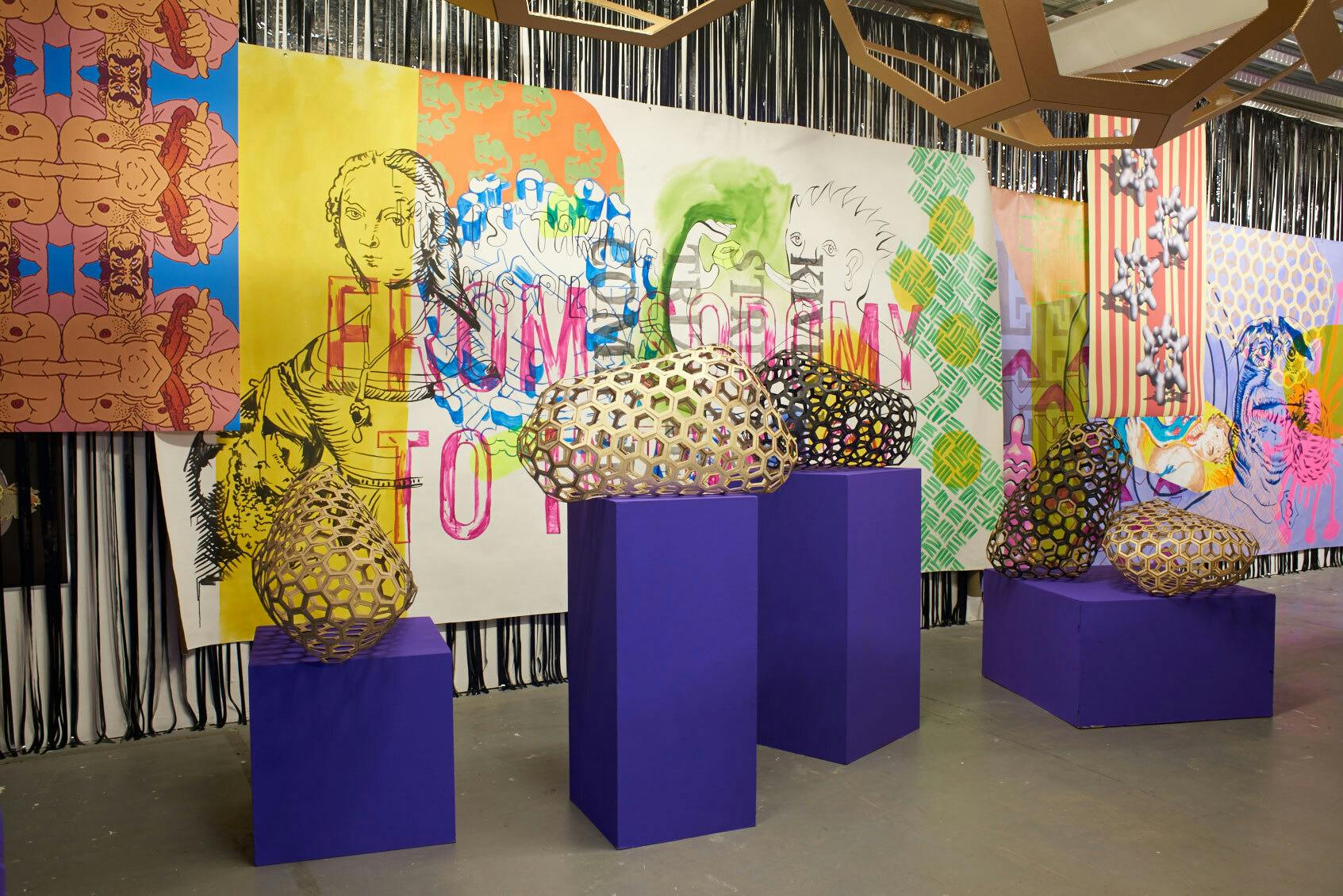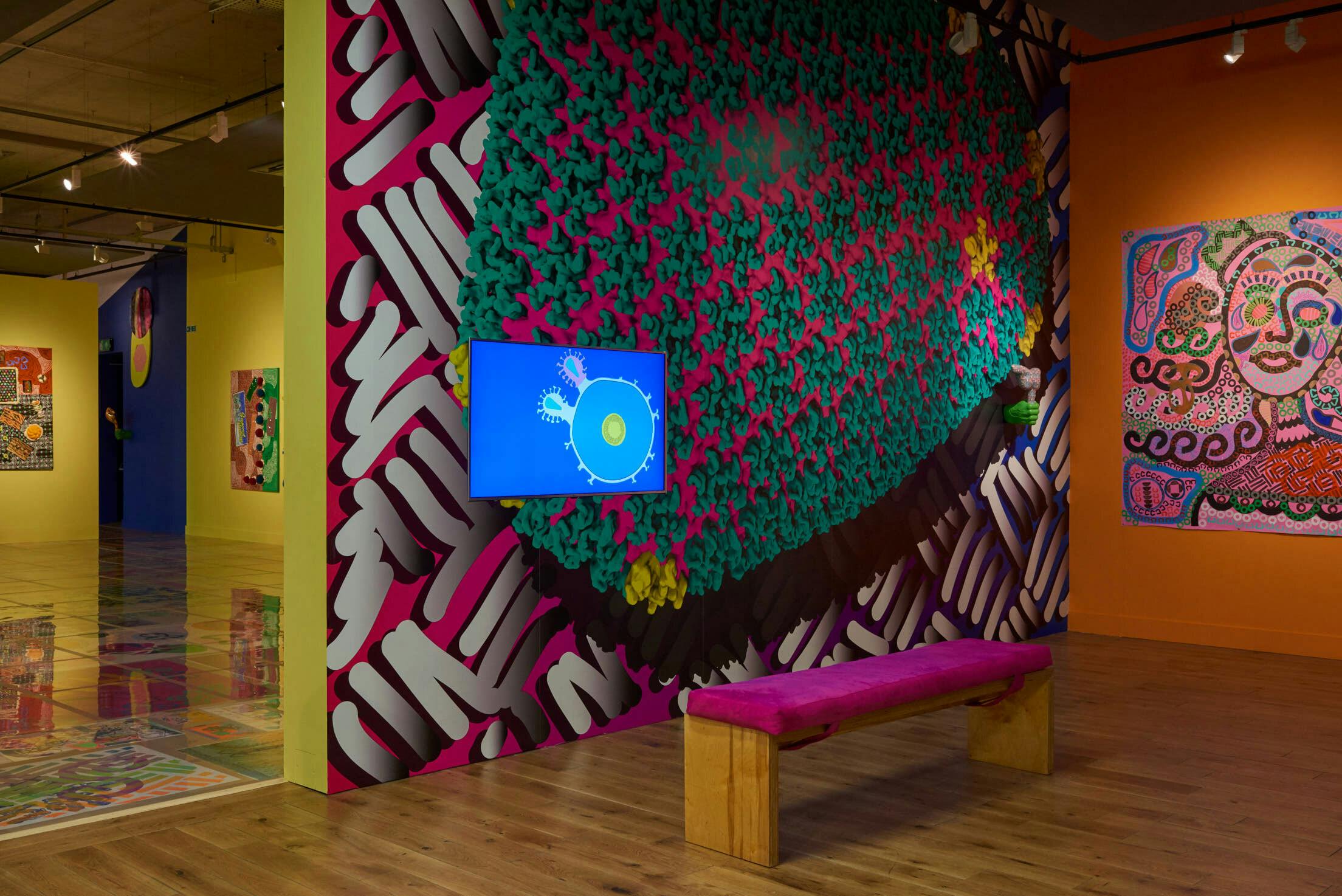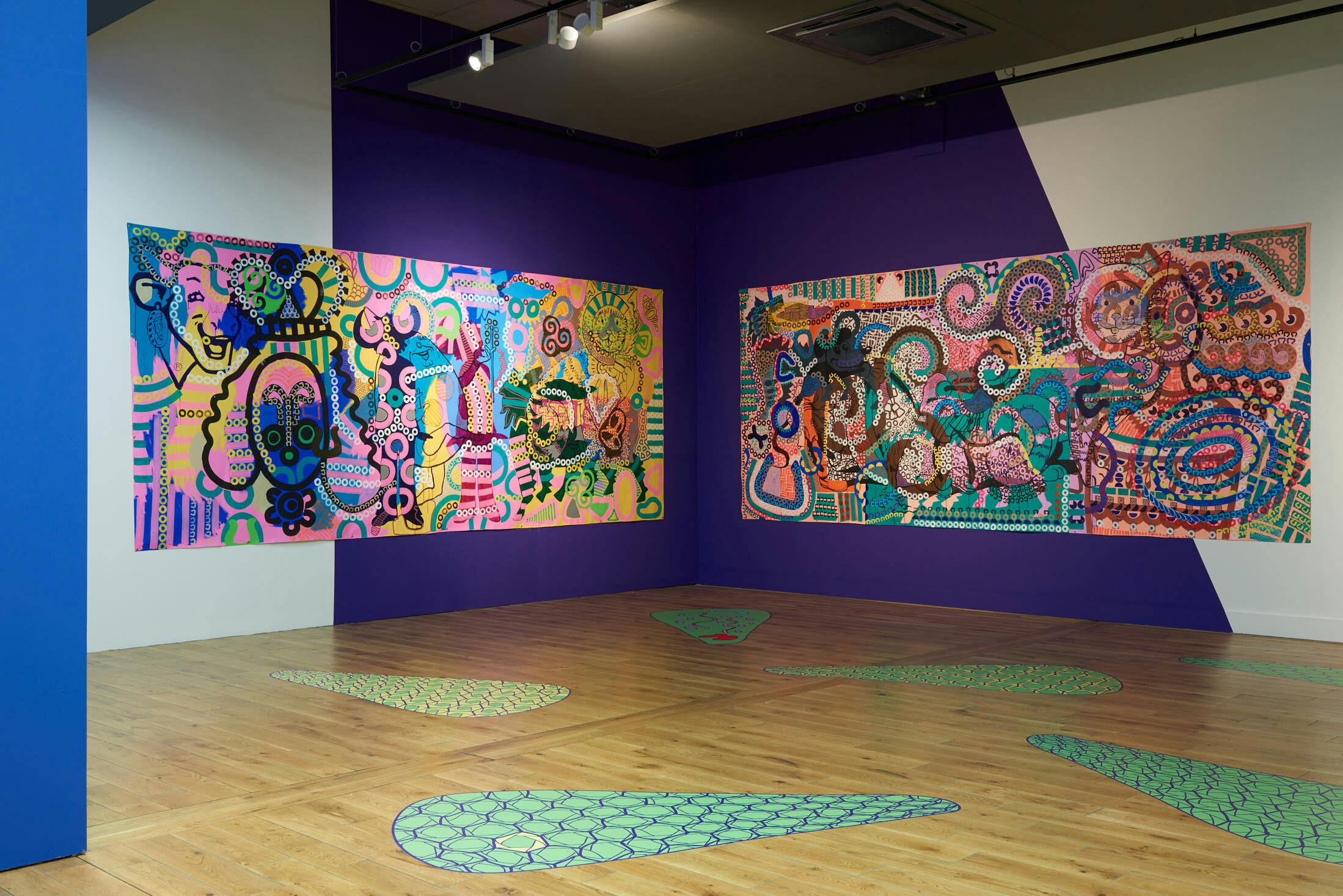Published November 7, 2022
Art Gone Viral: John Walter Uses Complex Virology as Vibrant Creative Fodder
British artist John Walter started his career as a painter, but has since built a reputation for his ‘maximalist’ approach that is truly multifaceted. Working across painting, print, virtual reality, film, animation, performance, sculpture, NFTs, and eventually installation, Walter often works collaboratively to tackle complex subject matter with humor, rigor and generosity. He has also curated and co-curated numerous exhibitions, including Patternicity at Exeter Phoenix and ASC Gallery, UK – bringing together artists whose works explore the art historical, national and gendered nature of patterns, and Shonky at the Hayward Gallery Touring, which explored visual awkwardness as an important mode of expression.
Building on previous collaborative projects exploring and reframing the ‘crisis of representation’ in HIV, he is currently undertaking a year-long artist’s residency at the Quantitative Biosciences Institute at the University of California, San Francisco. Walter also recently launched Sydney Ducks, a collection of NFTs that build on his interest in aphorisms, psycho dramas, and Surrealist storytelling.
John and I had a wide-ranging chat over Zoom about his current practice, the nature of cultural dissemination and his collaborations with some of the world’s leading virologists. This conversation has been edited for length and clarity.
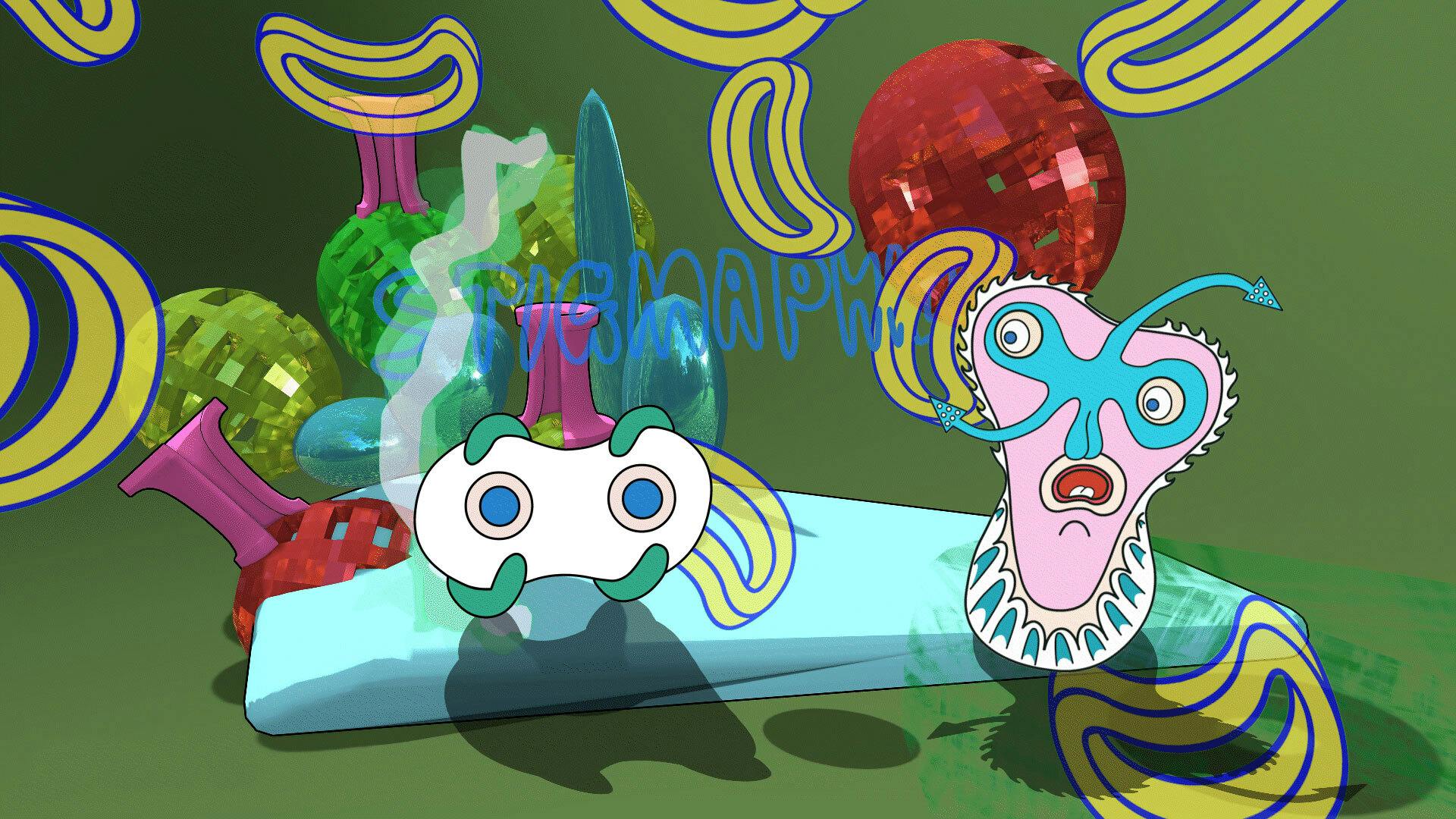
Tell me about your year-long residency at the Quantitative Biosciences Institute at UCSF. How did it come about? And how are you finding it?
JW: Well, I’m currently looking out onto the UCSF car park! It’s a huge medical university, it doesn't have an arts or humanities department.
There is a real buzz about this lab and this institution. They've got a huge grant from the government to research Covid, under the aegis of a program called AviDD. It's focused on SARS Cov 2 – developing ways to drug it and thinking about ways to deal with other pandemics. I'm in a hothouse of people who can write grants for science; people that have got money coming out of the wazoo, basically. Compared to the arts, anyway, it's on another level. But even within science, I think this was the biggest grant they've ever awarded in the US. This program is also in collaboration with people internationally, including the virologists and infectious disease specialists in London I'd worked with previously.
In terms of my journey to this point, I came into this art-science thing of my own volition through Alien Sex Club. It then led me into the world of nanotechnology, of these micro machines that are cells and viruses and increasingly cancers. Here at QBI, my existing understanding has suddenly ballooned into a lot more subject areas and I’ve started really thinking about how you might describe creativity using this freshly gained knowledge.
I mean, to me it's like the dream gig. It just landed on my lap when Lorena Zuliani-Alvarez, who I'd worked with in London, got a job here and, and then out of the blue I got an email saying: “Do you wanna come and be artist-in-residence?” Er, this never happens! I was like, “Yeah, whatever, let's have a Zoom…” thinking we'd just eliminate this immediately. And then it was real! A door opens and do you say yes or do you say no? And I stepped in and now I'm here. That's the short story!
Well, you’ve now established yourself as a seasoned and respected collaborator. In 2015, you worked with HIV specialist Dr Alison Rodger at University College London on Alien Sex Club – your incredibly bold multimedia installation which used the concept of a ‘cruise maze’ to explore notions of risk and addiction, tackling remaining taboos around HIV in the gay community head on.
In 2018, you worked alongside virologist Greg Towers at UCL to produce CAPSID – a truly ‘maximalist’ installation incorporating 250 works, including film, prints, paintings and sculptures that addressed the crisis of representation around HIV. It was gutsy, hilarious, rampageous and utterly bonkers.
I remember seeing it at CGP London and it blew me away – you managed to take such loaded and complex subject matter and produce a vital, humorous, illuminating exhibition that never crossed into trite territory.
With these projects and your QBI residency in mind, do you see yourself as working at the ‘intersection’ between art and science? Is that a label you’re comfortable with?
JW: To me, saying you’re working at an ‘intersection’ is really just a way of describing how collaborators get anything done. You've got to find overlaps between what you do and other people do in order to find – what have the (UK) Tory party called it? – some kind of coalition of chaos…
Although obviously the ‘coalition of chaos’ was an insult aimed at the opposition parties by the Tories, whereas your ‘chaotic coalitions’ have been both intentional and fruitful!
JW: Exactly! They're already very good at coalitions here within the sciences, and bringing me in as artist-in-residence is a natural extension of that.
Actually, I'm the only artist here. I'm the first artist they've had. Not everybody could take on this role because you've got to have a pretty strong sense of your own practice to be prepared to throw it against the wall like this. If you are an artist who only makes stand-alone pieces or is in need of constant feedback from other colleagues, you are going to sink in this environment because they don't share the vocabulary artists are used to.
But for me, it's exciting, because I have processes, routines, and subroutines of making that can immediately get it started. They're like cultures in Petri dishes – each project (and I have about 30 sub-projects on the go at once) gets ‘grown’, cultivated. Then some take on a life and become a work. Some die, some are better, some are worse, some are interesting, some are boring.
A Virus Walks Into A Bar is Walter’s narrates the life cycle of an HIV as if it were set somewhere between Coronation Street and Twin Peaks. The characters include an anthropomorphized capsid, along with other key proteins, co-factors and the targeted cell nucleus, depicted by the barmaid surrounded by regulars (the cytoplasm). The high definition video image contrasts with the handmade quality of the costumes, all produced by Walter, who also wrote, directed, co-edited and designed the sound for the film.
You’re very open and confident with that process, and I think that is something that comes as you develop as an artist…
JW: Yeah, and also knowing when to jump on something quickly. For example, yesterday, I was working with this guy, Jack Moen, who's doing research on – I want to tell you the name of the bacteria because it's so good – Deinococcus Radiodurans. They’ve found it in Chernobyl and other radioactive sites; scientists even kept it outside the International Space Station for three years, and it didn't die. When they brought it back to Earth, it carried on reproducing again, so this is a survival bacteria! And they're trying to work out how it can heal its DNA so well. So Jack was like – ‘come and make some drawings with this bacterium on Petri dishes.’ And so there we are with little drawing tools, making our funny circular drawings. It's very generous of him that he's up for it; he's clearly an imaginative person.
But then also I'm in a position in my head where I can just go “Yes! Let's do it”, knowing this could be a dead end or it could lead somewhere great. In a way, you've got to throw yourself in the stream to go on the journey. To risk failure knowing I've always done it this way up till now, and then to think ‘why don't I do it in this other way that I haven't done before and see if that's fruitful or not?’
In a sense, that gets harder as you get older, because you've got an established practice, meaning you've already eliminated a bunch of possibilities. On the other hand, you’re also more willing to go on the weirder journey, you’ve learned when to keep pressing on with an idea and when to cauterize something. The big advantage of being an older artist (John is 44.) is you've put more data into your AI – the more you feed your AI, the better the prediction gets.
I know you’ve been moving beyond thinking about real viruses into exploring ‘viruses of the mind’ too. I’ll just add some brief context here – the term ‘viruses of the mind’ was coined by British evolutionary biologist Richard Dawkins to explain how religious ideas and behaviors spread in ways analogous to biological and computer viruses. Can you tell me more about your thoughts on the term?
JW: Sure. What I was beginning to get into with CAPSID was this stuff of memes and viruses of the mind. I had this intuition – before I even had the vocabulary for it after reading Richard Dawkins and Daniel Dennett – that cultural stuff was transmitting, was replicating, like biological stuff. When an artist claims sole ownership of an idea, when they say, “this is mine”, you think “Well, it probably isn't, is it, hun?!” At art school when there's one person who says “I'm the artist that uses expanding foam” or “he’s the brightly colored guy”, you think “But you're not; it's just there's not enough competition here so you're the one that's got this bit of turf.” Then suddenly I could identify it in all these other cultural forms – art, film, sport, you name it.
All these concepts, visual signifiers, patterns, are transmitted from brain to brain via certain physical or non-physical structures known as viruses of the mind – they're the conduits for these transmissions. While artists are obvious engineers of these viruses of the mind, actually all humans are doing it in different ways for different things.
And what makes one virus of the mind more infectious than another is often how it interacts with biological things. So, viruses of the mind will piggyback onto our interest in sex and food and, you know, all these kind of primal interests and desires that our genes are programmed for, operating (as they do) for their own good. Religious viruses of the mind are a great example: they don't benefit us, they benefit themselves – they’re packaged in such a way that they can be transported from generation to generation.
A Paisley pattern is another great example. Why has this particular pattern endured for so long? Why has it survived? Why does it keep its shape? It will change enough to keep going, but you can still say a Paisley from 1400 and a Paisley from 2022 are both Paisleys, just like you can say a human then and now are the same.
So, what can I contribute to that? Well, I can give it my own spin; I can pull it apart and put it back together again. It's what we do as artists, isn't it? You take the car apart and you put it back together. We're kind of tinkerers. And if it goes well, when you put it back together, something happens where you produce a good artwork.
These viruses of the mind can be stickier when you compose them into larger ‘memeplexes’. So just think about this analogy of the Trojan Horse virus – how does something piggyback off something else to gain an advantage? In my practice, I'm piggybacking off the science so my visual memes gain an advantage. But it's not just selfish; it can't just be one way. The scientists gain an advantage too – their science gains a very different type of exposure. I make their science wet. I make it fun. I make it very visual. I don't just illustrate it; that may be one of the things I do, but really I produce a surrealist version of it that allows you into it with humor.
Testudo is always looking for more voices to write with us about the art world. If you’d like to pitch an article, please see our pitch guide for more information!
